6 Best Apple Trees To Grow In Alaska
In Alaska, you are not only able to grow ice sculptures, which is what many people think, but you can also grow more than that.
It is possible to grow a wide variety of cold-hardy crops there, such as kale and roots, but you can also cultivate a number of fruit-bearing plants.
Fruit trees are even grown there! It is no wonder that the trees in Alaska are as strong and fierce as the people who live there, as they have evolved to withstand the short summers and brutal winters of the land.
Even though there are many berry bushes that thrive in that state, there are only a few fruit trees that will thrive in that climate.
The best choice for you would be to choose a species and cultivar that suits your needs, but do your research before you plant any of them!
A good starting point would be to speak with a sales associate at your local garden center if you are not sure what will grow in your region.
Those trees that can survive in Anchorage, for example, might not be able to survive in the area of Fairbanks. Throughout Alaska’s 665,384 square miles of land, the elevations vary widely, resulting in a number of different climatic zones.
Trees that do well in zone 5 will not survive in zone 1, simply because trees in zone 1 simply do not have the hardiness necessary to survive such bone-chilling temperatures.
The apple trees that grow well in Alaska are the toughest trees on Earth. As a result, they need to be able to survive Alaska’s brutal winters as well as jump into fruit production during Alaska’s incredibly short growing season.
Fireside Apple Tree
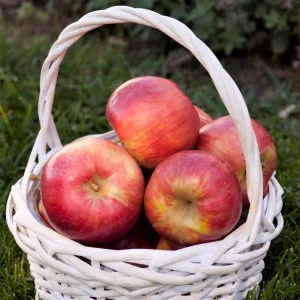
As a healthy snack, apples have the (deserved) reputation of being good for you.
You may have heard “An apple a day keeps the doctor away.”. But some days, you just want to stuff your face with sugar, cinnamon, and ice cream!
The Fireside Apple (Malus ‘Fireside’) has been a staple of bakery pantries since 1943, so they have endured as the perfect Apple for sweet desserts.
Whether made into pies or baked goods, preserved, juiced, or fresh, these delicious fruits are versatile and incredibly satisfying!
This easy-to-grow apple tree is enjoying a resurgence in home gardens thanks to its sweet taste and the fact that it does not shudder at bitter-cold winters. (After all, it’s a Minnesotan.)
Red and yellow fruits become more and more striped as they mature. Ripens in early October, just when a gooey apple crisp is so welcome as you warm up by the fire. (I wonder how the name came about?)
Ginger Gold Apple Tree
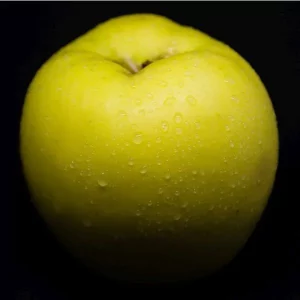
Among the ripening apples in the early to mid-season, the Ginger Gold Apple excels in many ways.
Ginger Gold Apple, a Golden Delicious apple variety discovered in 1969, stands out among apple varieties available today.
Ginger Gold Apple trees (Malus ‘Ginger Gold’) are most commonly known for the fruit that they produce. Recent years have seen Ginger Gold become one of the most popular varieties of apples.
In addition to its early harvest and high quality, Ginger Gold Apple is a beautiful apple tree with delicate white-pink blossoms in spring. It’s mid-August, however, when your Ginger Gold really shines.
Large, conical apples start out pale green, but ripen from mid- to late August, turning a lovely yellow-green and filling the branches with golden-hued fruit.
Zestar!® Apple Tree
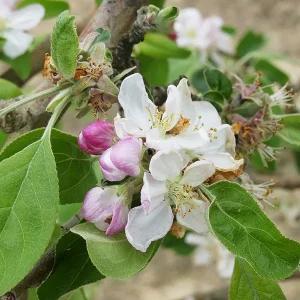
Zestar is the way to go! You do not have to choose between a cooking and a fresh-eating apple when you grow the apple (Malus x ‘Minnewashta’).
With the prolific production of sweet-tart fruit, this cold-hardy tree offers an early harvest and a large crop!
Zestar! What a great name! When the apple ripens, it comes alive with deep-red bushed apples with highlights of honey-yellow between the months of August and early September.
It is common to see some yellow speckles over the apple’s skin, and the side of the apple that receives the most sunlight will have the biggest burst of red.
The Zestar is a tasty treat with hints of brown sugar flavor, a crisp texture, as well as a zesty bite to it! The apple tree is one of the best apples to plant in a home orchard because it requires little care and produces lots of fruit.
A stunning apple, which is as beautiful as it is delicious (unlike many other early-season apples), this apple is as crisp as it is delicious. You can use them to make baked goods and savoury dishes as well as add them to your baking.
Cox Orange Pippin Apple Tree
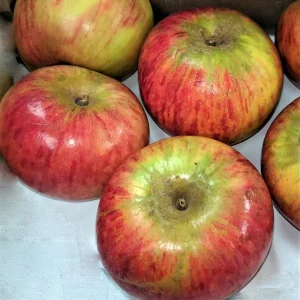
There is no substitute for a classic English apple for its richness and complexity of flavor. It is often deemed the finest of all dessert apples.
There is no doubt that the Cox Orange Pippin Apple Tree (Malus ‘Cox’s Orange Pippin’) has a striking, attractive orange-red color which makes it unforgettable and definitely an excellent apple to have.
It is a medium-sized fruit with crimson-brown stripes that are blushed with orange and has yellow skin. Those that remain on the tree for a longer period of time get redder.
As a chance seedling, it has been growing since the 19th century and thrives in coastal regions with cool summers and cool winters.
Growing apples for cider, cooking, and eating. There is a fine texture to the flesh and it ripens from mid-fall through early winter, but it will not tolerate extremely low humidity or extreme temperatures. In as little as a few weeks, you’ll have a good crop of this heavy bearing variety!
Yellow Transparent Apple Trees
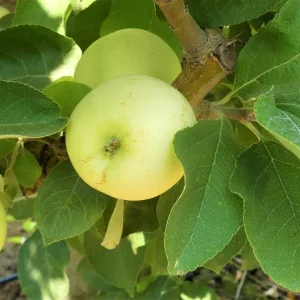
You will receive high marks for your baked goods when you use the creamy-white and tender Yellow Transparent Apples! You may even envision creamy white apple butter!
The Yellow Transparent (Malus ‘Yellow Transparent’) is a deciduous fruit tree that originated in Russia in 1870 and is now widely grown in the northern states in order to produce early ripening apples.
With a delightful yellow-hued bark and lush, green foliage.
The early display of pink or white flowers and their nectar resource are appreciated by pollinators. The display is a welcome respite from the winter doldrums.
It isn’t long before the apples follow, their skins a clear, pale yellow that can range from greenish yellow to almost white.
Espalier Edible Grafted Apple Tree
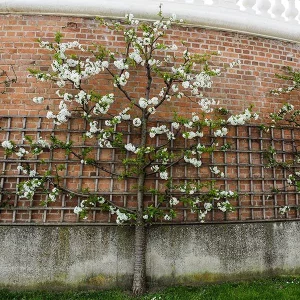
This special option will delight you! ‘Pre-pruned’ Apple trees for flat Espalier culture are now available from our fruit experts.
Through this ancient technique of specialized tree training, you can train any sized tree into a space-saving and unique form that you won’t find anywhere else!
The grafted plant features six varieties of Malus domestica (Granny Smith, Gravenstein, Honeycrisp, Red Delicious, Rome, and Red Fuji) that are beloved for their great taste.
You’ll get all six growing on one healthy rootstock for a one-of-a-kind landscape display.
Using wire trellises will allow you to easily pick all the developing fruit.
This is a multi-grafted tree that includes some of the most popular varieties in the world. You will be able to grow apples for every family member and every application if you plant one tree and maintain it.
